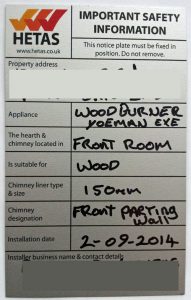I hope you will find this section both informative and a good reference source.
It contains a wide range of topics and tips about safety & best practices for wood burners, stoves and flue systems etc.
The coloured dots signify the following: ![]() Safety,
Safety, ![]() Tips,
Tips, ![]() £ money saver,
£ money saver, ![]() General.
General.
I will regularly update these posts and would gratefully include any good input sent in from you.
Carbon Monoxide (CO) Detectors. ~£15 to £50. There is a very good reason this is No.1, because it can literally save lives!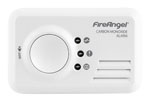

You can find excellent advice & information free on the Fire Service Web Site: https://www.fireservice.co.uk/safety/carbon-monoxide.
The UK Fire Service Resources recommends Safelincs Safety Products: https://www.safelincs.co.uk/co-detectors/?referrer=fireservice.
This is a great resource to review if your existing CO Detector is safe and if not, which alarm to buy.
This link was given to me by Unity Home Group, an Estate Agent in Anchorage, Alaska. It covers many aspects of Carbon Monoxide Safety in the home. It contains a great deal of valuable information on one page, so it deserves inclusion here.
https://www.akhomeshow.com/carbon-monoxide-safety.php
IMPORTANT: Check your existing CO Detector’s Replacement Date (you should see a month & year stamped on it) …the earlier portable models with replaceable batteries generally will only have a useable life of 5 to 7 years.
Most current portable models have a sealed battery which comes with a specified guaranteed life of either 7 or 10 years. They will sound an alarm on expiry too.
Building Regulations, Oct. 2010, require a CO detector for all rooms with a solid fuel burning appliance.
It is worth noting that gas appliances can also emit carbon monoxide e.g. combi’ boilers, gas cookers/hobs and gas fires. Though not compulsory it is highly recommended that you also include all rooms with these appliances. This includes garages and sheds with portable fuel heaters.
Warning: Carbon monoxide is known as the “silent killer” because it is odourless, tasteless and colourless. It’s also toxic, since the gas can prevent your body from properly transporting oxygen. If inhaled in high concentrations, carbon monoxide poisoning can happen quickly or it can also occur slowly, if toxic gas levels build up slowly over time.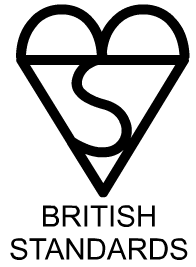
Always make sure it has the BSI kite mark.
The lifespan of units vary considerable from 5 to 10 yrs with sealed batteries or mains powered. Those using standard batteries always put in a NEW set, and then test it, before the start of every winter season.
Locating the CO Detector is critical:
Break your usual habit right now and read the manufacturer’s instructions!
Best practice, confirmed via HETAS and Which? – is locate around 15 cm from the ceiling, at least 1m (but not more than 3m) horizontally from the stove. Try to avoid locations above doors and windows due to air draughts.
A great source of information and advice about ‘all things’ to do with carbon monoxide detectors can be found from this link to Which? (open to non-subscribers).
Smokeless Coal. bags ~ 10kg bag, B&M, Home Bargains, Wickes and Ldl etc. Prices vary ~ £9.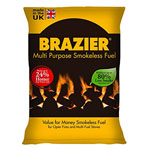
Generally I would not recommend using coal in a wood burner, even if it is set up for dual fuel burning.
A word of caution: the most common type of twin wall flue liners are made with 316 grade steel which many manufacturers say is unsuitable for coal. Only the more expensive 904 grade steel liner should be used for multi-fuel burners.
Magnetic Stove Flue Pipe Temperature Gauge. Prices vary ~£7 tp £9..
A very simple way to ensure your burner is operating at its optimum temp and max efficiency.
Too low – under 120 degrees C: incomplete combustion can cause smoke, excessive carbon monoxide, flue clogging soot and highly inflammable creosote deposits inside the flue pipe (typical cause of chimney fires).
Too hot – over 250 degrees C: wasting heat up the flue.
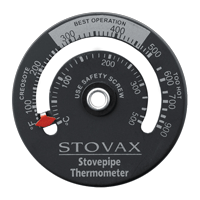 Ideal Temperature – Between approx. 120 C and 250 C.
Ideal Temperature – Between approx. 120 C and 250 C.
The magnet will hold it on to the vertical flue pipe, a few inches above the top of the wood burner.
Don’t stick it on to the actual wood burner or aga – it’s the flue gas temperature you want to measure not the furnace temp.
It pays to have your wood burner installed by a HETAS certified engineer.
Building regulations require it. A copy of the certificate is sent to HETAS, who will notify your Local Authority Building Control Department (LABC) of the work carried out. This saves you the time and money (sometimes up to £300) of seeking a Building Notice yourself and having an inspector from your LABC sign off the installation.
A copy of the certificate is also required to be sent to you and the installer will also retain a copy.
If you sell your home then the Solicitor acting for the buyer will require a copy. It may also be required to be presented to your insurance company. Should there be a problem and HETAS do not have a record of a HETAS certificate at the property then it is likely that you may not be insured.
The metal HETAS plaque [see image] is about 3″ x 5″ and should be FIXED in or near your household mains electricity fuse box.
Did you know an air vent is required if the stove has a rated heat output of over 5kW?
[5.5cm2 of free air for every kilowatt over 5kW].
Clean your chimney at the beginning and end of winter use.
Glass cleaner:
From the multitude of options out there on how to clean soot off the glass – from a bit of ash on damp newspaper to Stovax Glass Gel at £8 a small bottle!….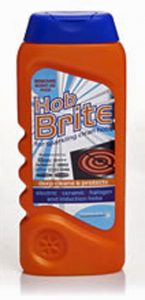
My suggestion is Hob Brite Cream (250 ml). Currently available at Home Bargains Aldi, Asda etc. ~ £2.
…a small squirt on a damp sponge, quick rub & wipe off…job done! It is a creamy liquid, so not abrasive.
There are many other equally good oven cleaner brands in most major supermarkets now.
ZIP Soot Reducer ~ £3 for 10 Sachets. Proving harder to find lately, so you need to do a search online.
 This product is a quick and easy way to help clean your chimney/flue. It dissolves the tar and creosote that has accumulated over time. With regular use it will prevent the build up of tar, creosote and soot in your chimney/flue, while increasing the thermal efficiency of your stove, reducing smoke emissions and preventing dangerous flue fires.
This product is a quick and easy way to help clean your chimney/flue. It dissolves the tar and creosote that has accumulated over time. With regular use it will prevent the build up of tar, creosote and soot in your chimney/flue, while increasing the thermal efficiency of your stove, reducing smoke emissions and preventing dangerous flue fires.
You can buy the same powder in 1kg tubs but due to it’s chemical composition I recommend using the sachet version only, to avoid risk of skin contact.
You just put 2 sachets into a hot fire once a week.
If you have ever want to see a mini ‘Aurora Borealis’ in your wood burner stove….now you can.
WARNING: Contains Ammonium chloride, potassium nitrate and sulphur. Skin irritant and very hazardous to eyes. Keep well away from children.
Flamefast Stove & Chimney Sweeping Log. Home Bargains or search online. Prices vary alot, need to search online. 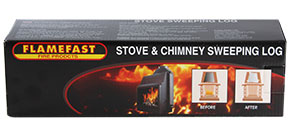
Easy-to-use logs helps to clear the deposits in the liner. You put this cleaning log in to a ‘cold’ woodburner and light the paper wrap and leave it until it has completely burned. Flamefast recommend using a cleaning log every 2 months.
I recently tested this product: The log burned quite hot for about an hour without any excessive smoking. I would stress DO NOT put this log in a running fire, ONLY a cold woodburner without any other combustible materials, or your woodburner could get extremely hot. It is not possible to tell how effective this cleaning log actually is, but your next sweep might at least give you an indicator.
